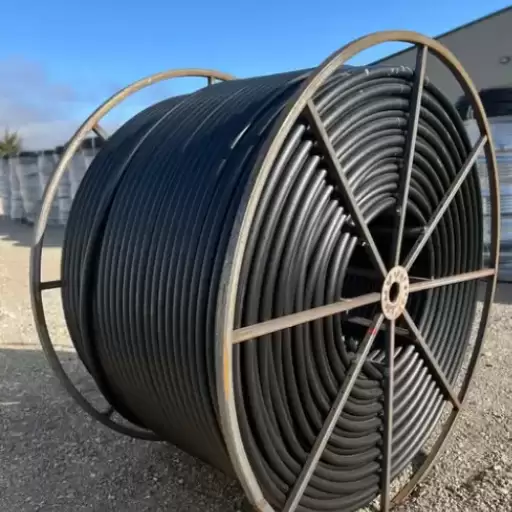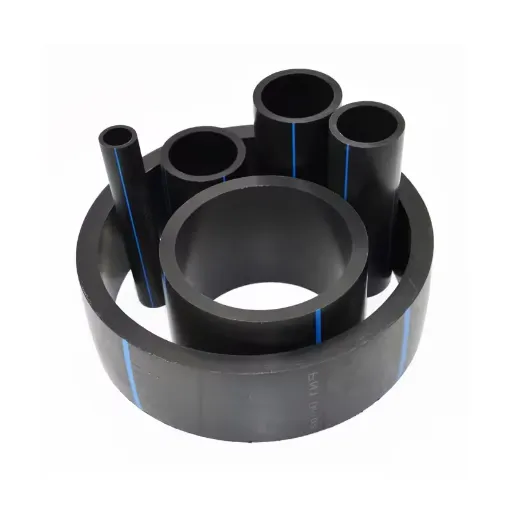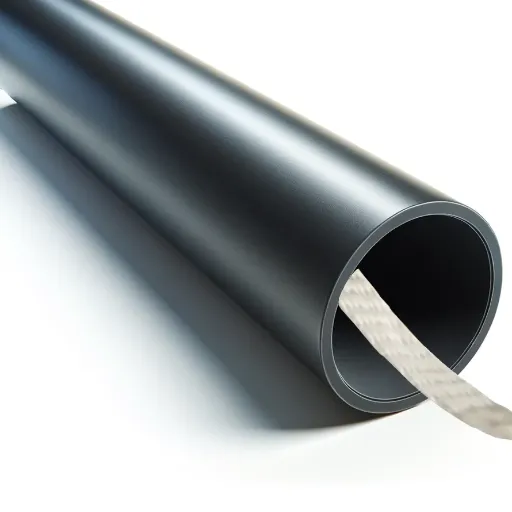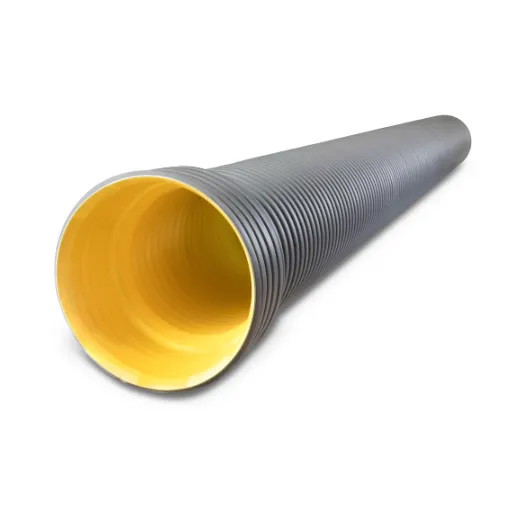High-density polyethylene (HDPE) pipes are widely used across industries due to their durability, flexibility, and resistance to corrosion and chemical degradation. However, ensuring the longevity and efficiency of HDPE piping systems requires a comprehensive understanding of proper support mechanisms. The role of pipe supports is critical, as they are designed to minimize stress, maintain alignment, and prevent damage caused by external factors such as temperature fluctuations, vibration, or shifting loads. This article provides a detailed exploration of HDPE pipe support systems, examining their design considerations, material choices, and maintenance practices to offer a technical framework for professionals in the field. By the end of this guide, readers will have a thorough understanding of how to optimize the performance of HDPE piping systems through effective support planning and implementation.
What Are the Most Common Pipe Support Products?
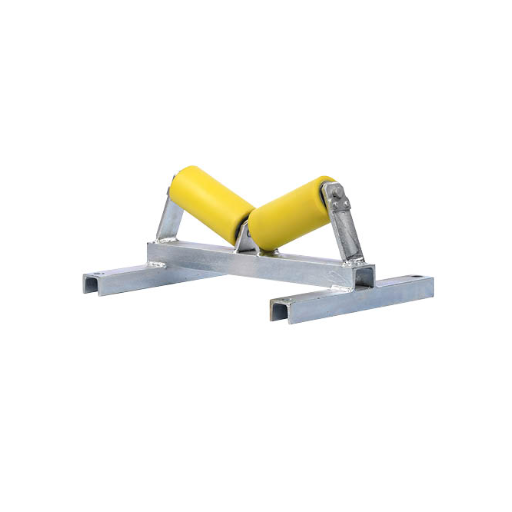
How Steel Pipe Supports Compare to HDPE
The differences between HDPE and steel pipe supports are mainly found in the materials’ characteristics, load capacity, and ecological efficiency. Steel pipe supports are better in achieving high tensile strength and stiffness. For instance, steel supports can endure heavy loads, demonstrating tensile strength that often exceeds 250 MPa, and thus, they are ideal for heavy-duty construction projects or use in high mechanical stress environments. Furthermore, steel has an impressive resistance to pressure-induced deformation, which allows for long-term stability.
HDPE pipe supports have the advantage of being more resistant to corrosion, exposure to chemicals, and UV degradation. If there is a need to use strong acids, bases, and salts then HDPE would be beneficial since it resists a broad spectrum of chemicals. In addition, HDPE’s lower density, which is between 0.93 and 0.97 g/cm³, allows for lighter structures for durability compared to steel.
Steel supports can perform excellently at high temperatures, but during such fluctuations, they tend to expand or contract, which means additional compensation measures, such as expansion joints, are necessary. Alternatively, HDPE is very flexible at normal operating temperatures, but it is limited to suboptimal use in high-temperature environments due to its low melting temperature of around 120-140°C.
Even though both materials have distinct benefits, choosing between steel and HDPE pipe supports must be guided by particular project details, such as loading patterns, environmental conditions, and chemical factors.
Choosing the Right Pipe Support for Your System
In the beginning, I would look at the load characteristics which includes the weight of the pipe, the fluid it carries, and any other dynamic forces acting on it. Take, for instance, steel pipes. Their supports can bear greater loads due to their higher tensile strength which usually is more than 400 MPa. However, HDPE supports are confined to lighter applications becasue of their lower tensile strength of about 25-40 MPa.
Following this, one must consider the environmental exposure. Steel supports are best suited for high temperatures as they can withstand up to 600 degree celcius in some applications, whereas, HDPE supports are limited to under 140 degree celcius. Additionally, in corrosive or chemical heavy environments, I tend to favor HDPE supports, for their greater resistance to chemicals. Steel would need extra coatings or galvanization to prevent rusting, which makes them less attractive.
Lastly, flexibility and installation conditions also plays a great part. When low weight and high maneuverability is required ease of installation, HDPE supports are desirable. Although, in highly rigid conditions, steel would be the preferred answer.
Taking these factors into consideration with respect to the project scope allows me to reach a decision that is well reasoned and blends form with function.
How to Select the Best Support System for HDPE Pipes?
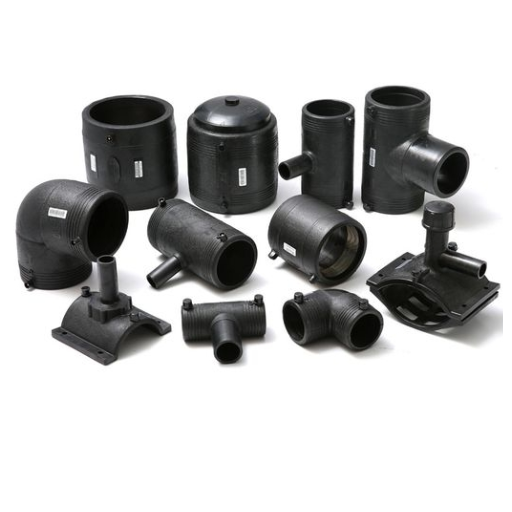
Factors to Consider When Selecting a Support System
In determining the support system for HDPE pipes, I intend to achieve the best results and durability by considering a number of different factors. To begin with, I focus on the load capacity of the support system. Even though HDPE pipes are light, they can hold a lot of content. Therefore, the support structure has to withstand the operational load and any accompanying pressure losses. This involves estimating the pipe’s weight, the fluid’s density, and the dynamic loads due to flow or external vibrations.
If high installation temperatures, UV radiation, or corrosive elements are present, I ensure that formulated materials like galvanized steel or treated HDPE supports provide sufficient resistance. Moreover, the coefficient of thermal expansion of HDPE pipes is significant, requiring accommodating flexible supports that would allow for movement without causing deformation or stress to the structure.
Simplicity of installation is also an important consideration. HDPE brackets are lightweight, modular, and ideal when there is limited space and a need for rapid deployment, whereas heavy duty steel adjustable supports are better suited for permanently high-stress installations.
Finaly, I make it a point to go over the safety and compliance requirements of the selected support system. Doing this helps me strike a balance between the different functionality, durability, and practical needs of the project.
The Role of Structural Steel in Pipe Support Systems
The design and implementation of pipe support systems benefits from structural steel due to its critical role and having a high strength-to-weight ratio, durability, and versatility in various structural configurations.
- Material Strength: Structural steel grades exhibit high yield strength that provides dependable support as load is applied without permanent deformation.
- Load Capacity: A load capability analysisincludes the calculation of static and dynamic loads. The weights of the pipes, contents, insulation, and the outside forces such as wind or seismic activity (ASCE 7-22) need to be factored in.
- Corrosion Resistance: The Outdoor resistance of chemically exposed systems is enhanced through coated or galvanized steel as it adheres to ASTM A123 coating standards resilience in environmental conditions.
- Dimensional Tolerances: Meticulously Done manufacturing guarantees that in large installations, proper alignment and load distribution is achieved therefore, vital dimensions need to be consistent.
These factors allow me to ensure structural steel components not only fulfill immediate requirements but also provide longevity and compliance with relevant codes, such as ASME B31.1 or API 560, depending on the piping system’s scope and conditions.
Expert Guide to Selecting Pipe Support Components
The presiding conditions of the component’s anticipated operating environment must match the design of the support and the selection of materials. For example, in high-temperature applications, supports must include provisions to accommodate thermal expansion, for example, insulated hangers or sliding supports.
- Load Capacity: Ensure the support can hold both static and dynamic loads inclusive of dead weight, pressure-driven loads, and thermal expansion.
- Temperature Range: Ensure the material is compatible with the operating temperatures especially on systems above 500 degrees Fahrenheit (260 degrees Celsius). High heat environments may require the use of stainless steel or special alloys.
- Corrosion Resistance: Humidity, chemical vapors, or any other external exposure require the components to be galvanized, epoxy-coated, or made from stainless steel.
- Vibration Control: For systems with vibrations, I add springs or dampers to help protect against fatigue and wear.
- Compliance with Standards: I ensure that all components meet the minimal requirements of standards ASME B31.1 or ASME B31.3 for mechanical safety and integrity.
By systematically addressing these factors the selection of pipe supports with optimum system durability, compliance, and long term efficiency is guaranteed.
What Are the Application Methods for HDPE Pipe Supports?
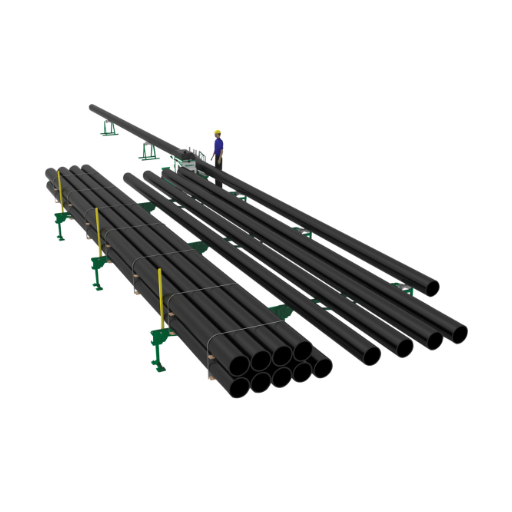
Best Practices for Cold Weather Installations
Sustaining the system integrity and performance relies on the proper installation of HDPE pipe supports during the cold weather period.
- Material Temperature Sensitivity: Lesser flexibility of HDPE at lower temperatures increases stress-induced cracking risk. To resolve this issue, try to ensure that the pipe and support materials are pre-heated to a minimum of 50 degree Fahrenheit or 10 degree Celsius before install. Use insulated storage or temporary heating solutions as required.
- Thermal Expansion and Contraction: Take into consideration the expansion and contraction accounts and accompanying expansion loops, guides or flexible supports intended to function in sub-freezing conditions also need to be added. The expansion of HDPE pipes is observed with a coefficient of thermal expansion that is equivalent to 0.00012 in/in/°F.
- Support Spacing Adjustments: During reduced temperature, the rigidity of the pipe can change, thereby requiring closer support spacings, which may need to be tighter than the initially set. It is recommended that the standard spacing for HDPE pipes should be reduced by 20 percent for supports set below 32 degree Fahrenheit.
- Lubrication of Fittings: Apply low-temperature silicone-based lubricants to joints and fittings, and sealers since colder temperatures require the joints assembly effort to drastically increase.
- Anchor Points and Insulation: The insulation barriers for cold weather, like polyurethane foam that has an R-value greater than 6, can minimize the temperature variabilities and reduce the load to the supporting structure. The supports must be properly secured in order to avoid thermal stress from being placed on them. All anchoring points should be well fastened.
- Various Weather Proof Coatings and Sealants: The use of stainless steel or other corrosion resistant materials, and weather proof coatings, on fasteners will help prevent degradation in icy and wet conditions.
If these instructions and limits are followed, the HDPE pipe installation’s durability and efficiency will remain optimal even under extreme cold weather conditions.
Ensuring Longevity of Your Support System
In order to maintain support systems long-term, a few fundamental criteria need to be addressed which involve design and material choices, along with maintenance planning.
- Load Capacity and Distribution: Make certain that the support system will accommodate the maximum expected load plus a safety margin, which generally varies between 1.5 to 2.0 of the expected load depending on the field (with construction being the highest). A uniform distribution of load will minimize localized stress and increase system life.
- Material Selection: Ensure corrosion resistance and rough weathering resistance by using galvanized steel or polymer composites with high strength. Check whether the specified materials have adequate levels of tensile strength, thermal resistance, and the environment in which they’ll be placed.
- Thermal Expansion Considerations: Provide for expansion joints or sliding supports for thermal contraction and expansion. The joint spacing and placement should be guided by the coefficient of thermal expansion of the material, for instance, 0.18 mm/m°C for HDPE.
- Regular Inspections and Maintenance: Provide corrective action against wear, corrosion, and strut damage through visible inspection at regular intervals. Employ non-destructive testing methods if possible without taking the structures apart to check if the components are still mechanically safe.
- Protective Coatings: Employ protective and weather-proof coatings to prevent fouling, including UV rays, moisture seepage, and grime.
With these steps paired with rigorous computations as well as engineering norms, the support system can sustain functional dependability along with keeping its structural integrity over a prolonged service life.
How Does Structural Steel Enhance HDPE Pipe Support Systems?
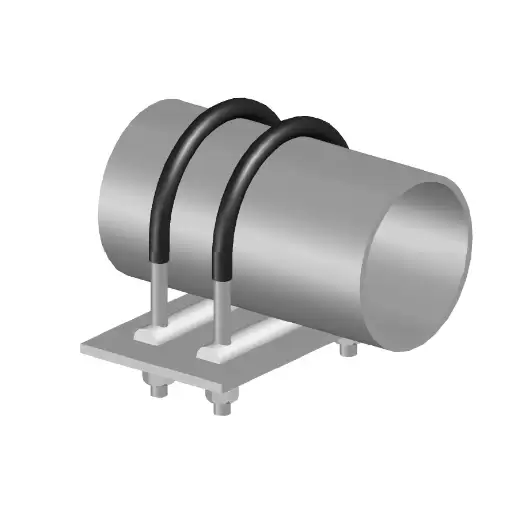
Benefits of Using Structural Steel in Pipe Supports
Because of its distinct material characteristics and adaptability, the addition of structural steel to HDPE pipe support systems is advantageous.
- Robust For its Mass: Structural steel is structurally sound under tension and compression and has a low weight to strength ratio which means it can carry heavy loads while being lightweight. This is crucial for HDPE pipe networks as they need efficient load distribution.
- Long Lasting and Lends Itself To Resist Corrosion: Structural steel, when treated and coated correctly can resist humidity, chemicals, and temperature changes which structural HDPE pipelines are susceptible to. As an example, compliant hot dip galvanized steel can lead to the formation of zinc coating that can last for over 50 years in standard atmospheric conditions and greatly improves the lifespan of the support system.
- Thermal Stability: Structural steel is capable of withstanding a wide range of temperatures without significant structural changes. This helps maintain the integrity of the pipe support structure, especially when bearing HDPE pipes that may thermally expand and contract. With an approximate thermal conductivity value of 43 W/m·K, structural steel transfers heat away from the covered areas, aiding in the reduction of stress concentration in the critical regions.
- Ease of Fabrication and Installation: Because of structural steel’s high adaptability, even specific geometric and dimensional requirements posed by HDPE pipe layouts can be fabricated with ease. It is also versatile in the scope of engineering applications due to the welding, bolting, and cutting capabilities that have been incorporated.
- Economic Efficiency: Although the initial cost of materials and protective treatments may appear to be high, the lifecycle cost is saved tremendously due to the long operational life and minimal maintenance structural steel requires.
In conjunction with meeting modern engineering standards, structural steel also makes cost-efficient and reliable solutions for HDPE pipe support systems while maintaining structural integrity.
Innovative Design Concepts in Steel Pipe Supports
New design strategies for steel pipes support innovation in the efficiency, longevity, and flexibility of the structures to complex engineering processes. Advanced design methods are now aided with computer programs like Finite Element Analysis, which aid in load balancing and stress distribution optimization. Such designs are also featured to be adjustable in their configuration, implement devices for fail-safe dynamic load control, and use structural part paints of epoxy or other corrosion-resistant surfaces.
- Load Capacity: The steel pipe supports are designed to be durable and withstand heavy loads from 500 lbs and can go beyond 20,000 lbs.
- Corrosion Resistance: Steel parts receive protective treatments either through galvanization (zinc coating of 40-85 microns) or epoxy paint. The coatings carry out the ASTM B117 (Salt Spray Test) to prove the ability of materials to adapt over time with antagonistic surroundings.
- Thermal Expansion Allowance: Designs makes provisions for sliding or spring supports for the cessation or extension of pipes for thermal movements between 0.1 to 0.3 inches per hundred degree Fahrenheit changes.
- Vibration Damping: When there is a high potential for vibration, elastomeric or polymer pads are used on the support arms, which reduces vibration by as much as 50%. This greatly reduces the damaging forces on the support structure and the connected pipeline’s interface.
- Adjustability: Some modern systems incorporate adjustable bolts or swiveling parts that enable ±5° or ±3% alignment tolerances for Angular and Off-Axis installations.
Fulfilling these particular features enables the newest steel pipe support systems to offer efficient, dependable, and flexible solutions that meet the higher standards of contemporary industrial infrastructure.
How Can I Purchase HDPE Pipe Supports?
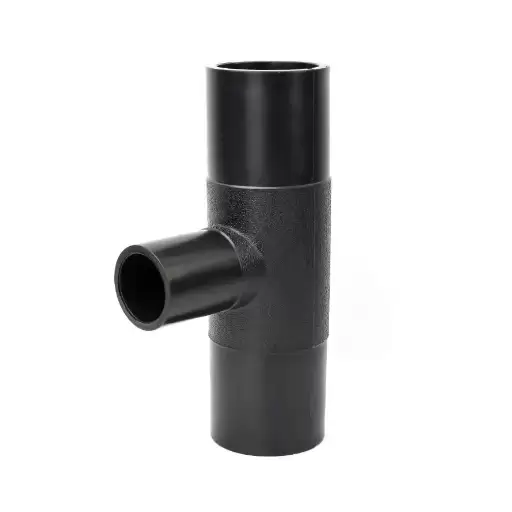
Understanding the Shop and Billing Process
Identifying a supplier for HDPE pipe supports is routine work. This routine work often includes examining the technical details of the supports, for example, their load bearing capabilities, environmental resistance, or how they work with the piping system. These features are all essential for confirming that the product will work and is safe for the project.
- Material Grade: Determines the HDPE standard, providing durability with resistance to chemicals.
- Load Capacity: Defines the maximum weight that can be placed onto the pipe support, which is critical for structural integrity.
- Thermal Expansion Tolerance: This shows the facility of performance when dealing with temperature extremes.
- Installation Dimensions: Restricts the sizing clarification to ensure compatibility with the existing structure.
Since my project’s specifications align with these criteria, I can move forward to complete the purchase without hesitation. Most payments are done using credit cards or bank deposits, although some suppliers make provisions for bulk purchase discount options and more lenient payment methods.
Exploring Payment Method Options for Products and Services
As I consider product and service payment options, my priority is to find the simplest and most secure methods that compliment the operation of my project best. For example, while credit cards and bank deposits are common methods, I factor in whether suppliers provide options such as bulk purchase deals or even prolonged payment periods.
- Transaction Fees Evaluation: Assessing if the payment option has extra costs associated with it and ensuring those costs are reasonable enough to allow for sufficiency in the overall budget.
- Processing Time Evaluation: Confirming that prompt payment processing is achieved so there are no delays in the timelines for the projects. For instance, bank transfers normally take between 1-3 working days.
- Security Standards: Checking if there is compliance with established security measures including SSL encryption and PCI DSS in the protection of payment transactions.
- Supplier Policies Examination: Looking at the suppliers’ discount policies for large purchases and their worrying effect on budget compliance in big projects.
- Payment Provision Evaluation: Considering flexibility for partial payments and split payment options, which is very important for cash flow for longer-term projects.
By focusing on these technical, I can ensure that the selected payment options are advantageous to the financial and operational needs of the project.
Reference sources
Frequently Asked Questions (FAQs)
Q: What are HDPE pipe supports?
A: HDPE pipe supports are specialized tools designed to provide stability and support for high-density polyethylene (HDPE) piping systems. These supports are essential for maintaining the integrity and efficiency of the piping system in various commercial and industrial applications.
Q: How do I select the right HDPE pipe support for my project?
A: Selecting the right HDPE pipe support involves considering factors such as pipe size, weight, location, and the environmental conditions where the pipe will be installed. It is advisable to consult with a contractor or a provider who specializes in HDPE technology to ensure the correct choice.
Q: Can I download a guide on installing HDPE pipe supports?
A: Yes, many manufacturers and providers offer downloadable guides and resources on their websites. You can click on the relevant link on their page to access these materials and ensure proper installation procedures are followed.
Q: What is the difference between commercial and specialty HDPE pipe supports?
A: Commercial HDPE pipe supports are designed for general use in standard applications, while specialty supports are developed for unique or challenging environments. These might include conditions requiring specific material properties or innovative support designs.
Q: How do I address issues with HDPE pipe supports during installation?
A: If you encounter issues during installation, it is important to first consult the installation guide provided by the manufacturer. If further assistance is needed, contacting the support team via phone or through the contact page on their website may be necessary.
Q: What should I do if I need to disable an HDPE pipe support temporarily?
A: Temporarily disabling an HDPE pipe support should be done with caution. Ensure that the pipe system’s stability is maintained elsewhere and that all safety protocols are followed. Consulting with a qualified contractor is recommended before proceeding with any such actions.
Q: Who is the owner of the HDPE pipe support technology I am using?
A: The ownership of HDPE pipe support technology typically lies with the manufacturer or the company that developed and patented the specific design or material used. Check the product information or contact the provider for detailed ownership information.



